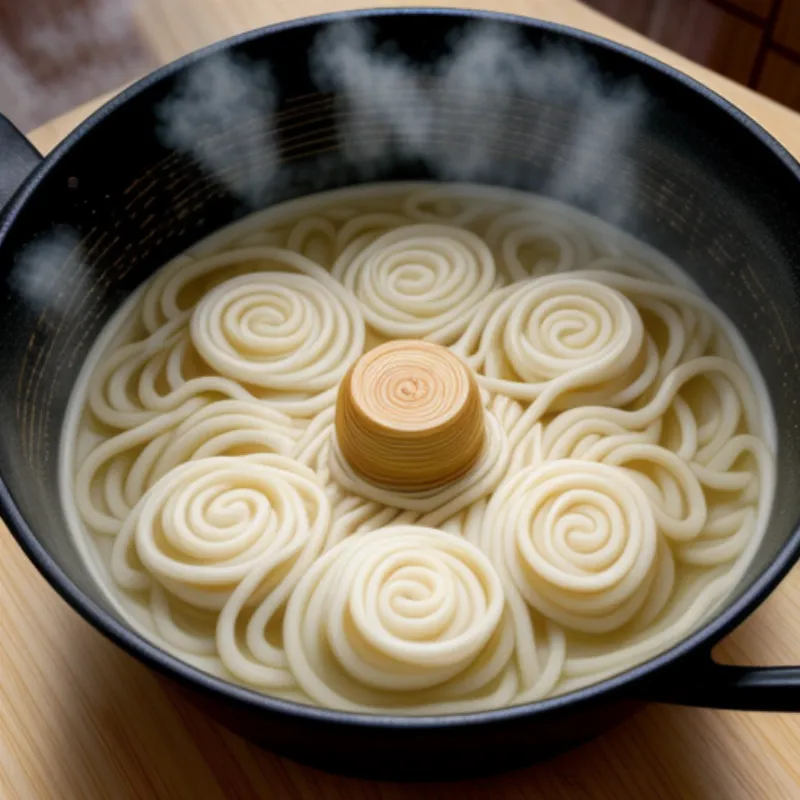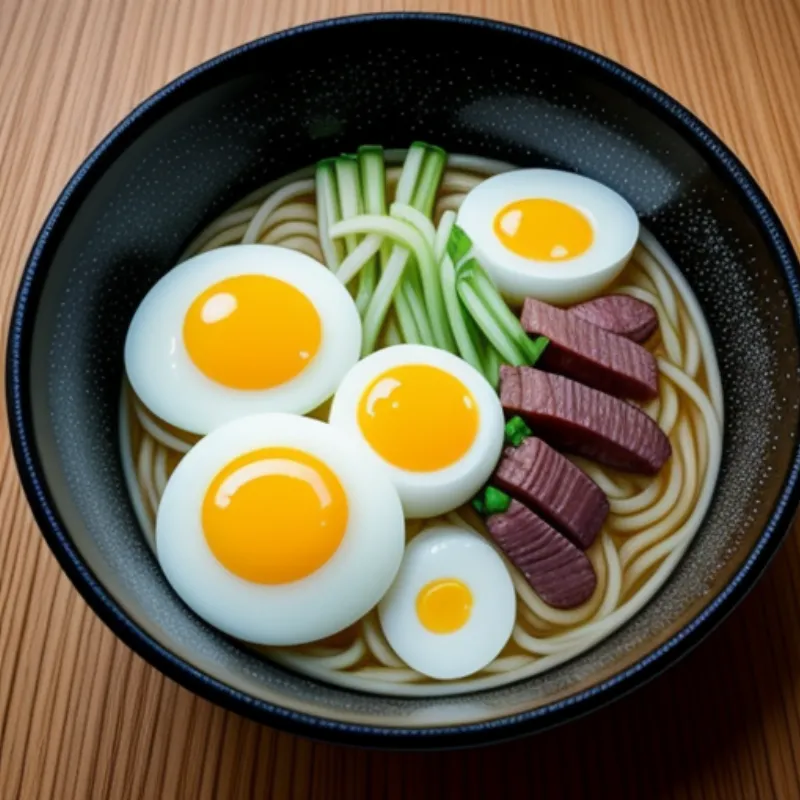Steamed udon. Just the name itself conjures up images of comforting bowls brimming with thick, chewy noodles, bathed in a savory broth and topped with an array of delicious ingredients. This Japanese staple is not just incredibly satisfying but also surprisingly easy to make at home.
Whether you’re a seasoned chef or just starting your culinary journey, this comprehensive guide will equip you with everything you need to know to create a steaming bowl of udon that will tantalize your taste buds and warm your soul. So, get ready to embark on a delightful adventure into the world of Japanese cuisine and discover the joy of making steamed udon from scratch!
Unlocking the Secrets to Perfectly Steamed Udon
“The beauty of udon lies in its simplicity,” my grandmother used to say. “Treat the noodles with care, and they will reward you with a texture that is both chewy and tender.” Her words have always stayed with me, a guiding principle in my culinary explorations of this versatile dish.
The key to perfect steamed udon lies in understanding the delicate balance of timing and technique. Steaming, unlike boiling, allows the udon to retain its delightful chewiness, preventing it from becoming mushy.
Gathering Your Ingredients: A Symphony of Flavors
The beauty of udon lies in its versatility. You can customize your bowl with an array of toppings and broths to suit your taste. Here’s a basic list of ingredients to get you started:
- Udon Noodles: 300g dried udon noodles (or fresh, if available)
- Water: For steaming and rinsing
Optional Toppings:
- Protein: Thinly sliced beef, chicken, pork, tofu, or eggs
- Vegetables: Spinach, mushrooms, bok choy, carrots, bean sprouts
- Garnishes: Chopped scallions, sesame seeds, nori seaweed
Broth Options:
- Kakejiru: Traditional Japanese dashi-based broth seasoned with soy sauce, mirin, and salt
- Kimizu Sauce: Creamy sesame seed sauce (for a delicious twist, check out our Kimizu Sauce recipe)
- Shiitake Dashi Sauce: Earthy and savory, perfect for mushroom lovers (try our Shiitake Dashi Sauce recipe)
- Sudachi Sauce: Citrusy and refreshing, ideal for a light and zesty flavor (explore our Sudachi Sauce recipe)
- Ankake Sauce: Thickened savory sauce, perfect for a hearty and comforting bowl (discover our Ankake Sauce recipe)
Tools of the Trade:
- Large Pot: With a lid, for steaming
- Steaming Basket: Or a heatproof plate that fits inside the pot
- Colander: For rinsing the noodles
- Serving Bowls: To showcase your culinary masterpiece
Steaming Your Way to Udon Perfection: A Step-by-Step Guide
- Prepare the Udon: Bring a large pot of water to a boil. Carefully add the udon noodles and cook according to the package instructions. This usually takes about 8-10 minutes for dried udon. If using fresh udon, the cooking time will be shorter.
- The Art of Steaming: While the udon is cooking, fill the bottom of the pot with about an inch of water and bring it to a simmer. Place the steaming basket inside, ensuring the water doesn’t touch the bottom of the basket.
- Rinse and Steam: Once the udon is cooked, drain it in a colander and rinse under cold water to remove excess starch. This step is crucial for preventing the noodles from sticking together. Transfer the rinsed udon to the steaming basket, spreading it out evenly. Cover the pot and steam for 5-7 minutes, or until heated through.
- Prepare Your Toppings: While the udon is steaming, prepare your desired toppings. Cook the protein and vegetables separately. You can stir-fry them, blanch them, or simply serve them raw, depending on your preference.
- Assemble Your Bowl: Carefully transfer the steamed udon to individual serving bowls. Add your chosen broth, protein, and vegetables.
- Garnish and Serve: Garnish with chopped scallions, sesame seeds, or nori seaweed. Serve immediately and enjoy the steaming hot bowl of udon!
Tips and Tricks from My Grandmother’s Kitchen
- Prevent Sticking: To prevent the udon from sticking together, add a splash of oil to the boiling water while cooking.
- Don’t Overcook: Overcooked udon can become mushy. It’s better to slightly undercook them as they will continue to cook during the steaming process.
- Get Creative with Toppings: Don’t be afraid to experiment with different toppings and broths. You can even use leftover roasted vegetables or grilled meats to add a unique twist.
- Season to Taste: Always taste and adjust the seasoning of your broth to your liking.
FAQs: Addressing Your Udon Queries
Can I use pre-cooked udon noodles?
Absolutely! Pre-cooked udon noodles are a convenient option. Simply follow the steaming instructions in step 3, adjusting the steaming time as needed.
What can I substitute for dashi?
If you don’t have dashi, you can use vegetable broth or water as a base for your broth. However, keep in mind that it will slightly alter the flavor profile.
Conclusion: Savor the Flavors of Homemade Steamed Udon
Making steamed udon at home is a testament to the fact that deliciousness doesn’t have to be complicated. By mastering these simple techniques and embracing your culinary creativity, you can enjoy this Japanese comfort food any night of the week. So gather your ingredients, put on your apron, and embark on a flavor-filled journey to create a bowl of steamed udon that will impress your family and friends!
 Steaming Udon in a Bamboo Steamer
Steaming Udon in a Bamboo Steamer
 Bowl of Steamed Udon with Toppings
Bowl of Steamed Udon with Toppings
We’d love to hear about your udon adventures! Share your experience, tips, and photos in the comments below. Happy cooking!
